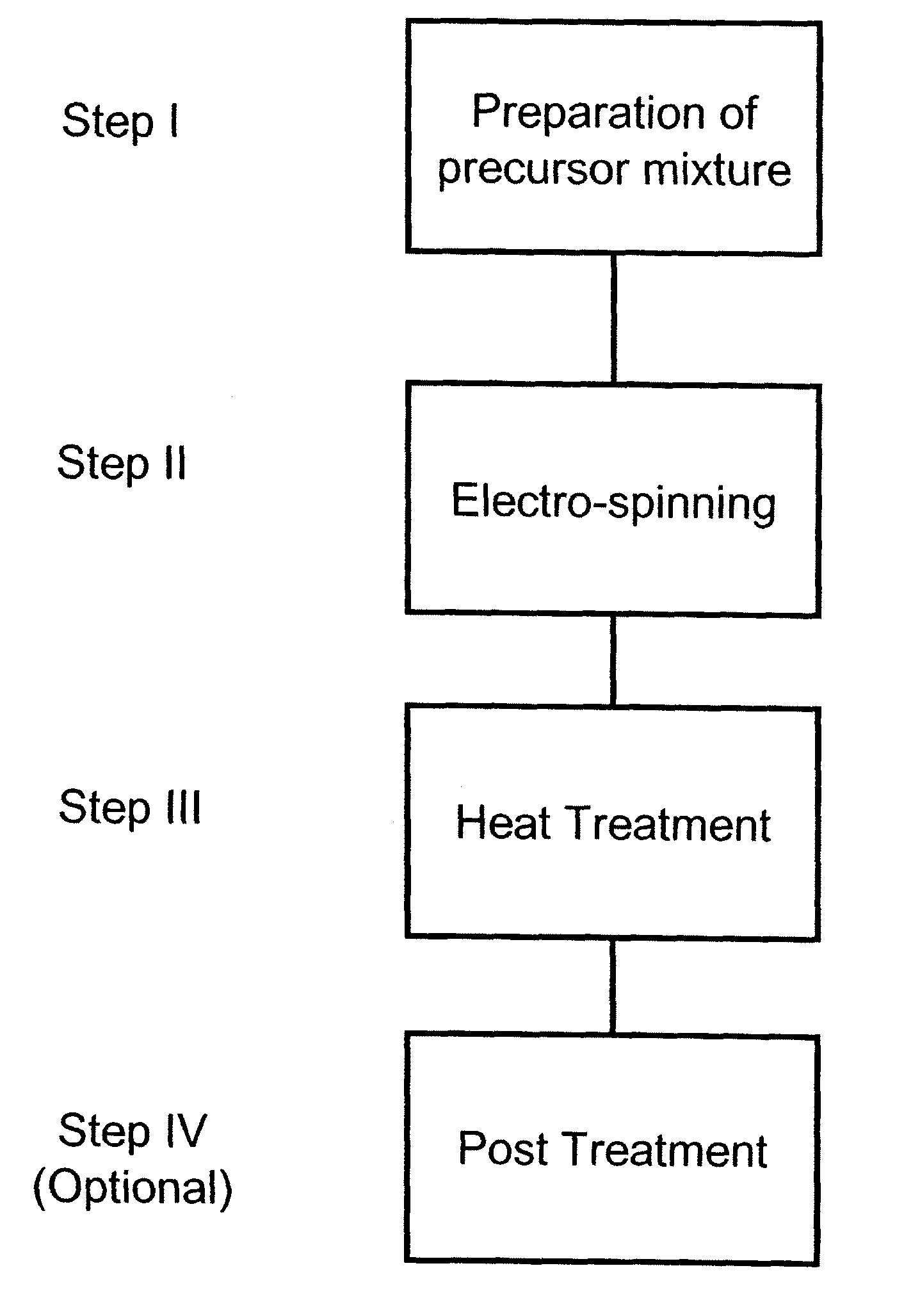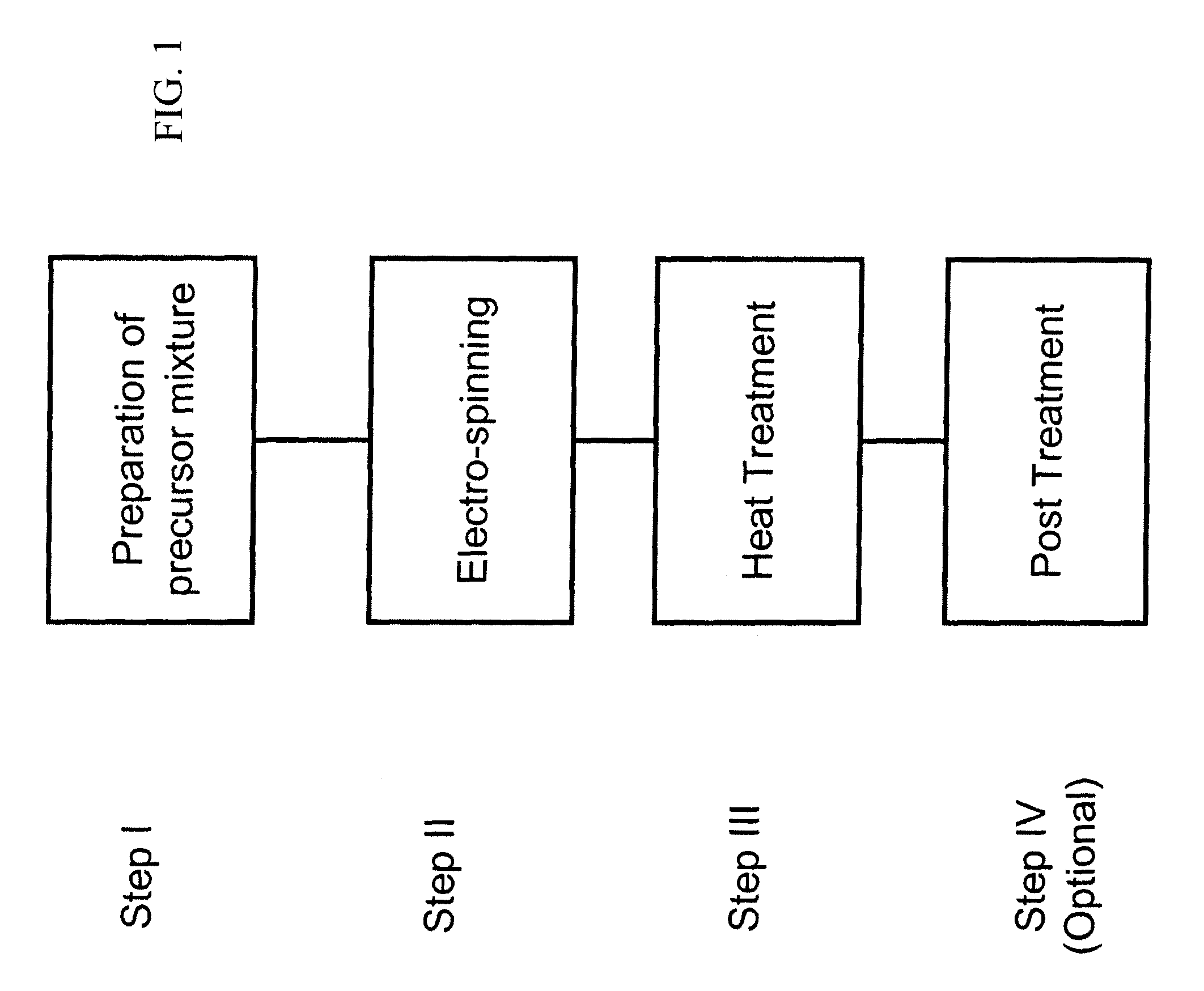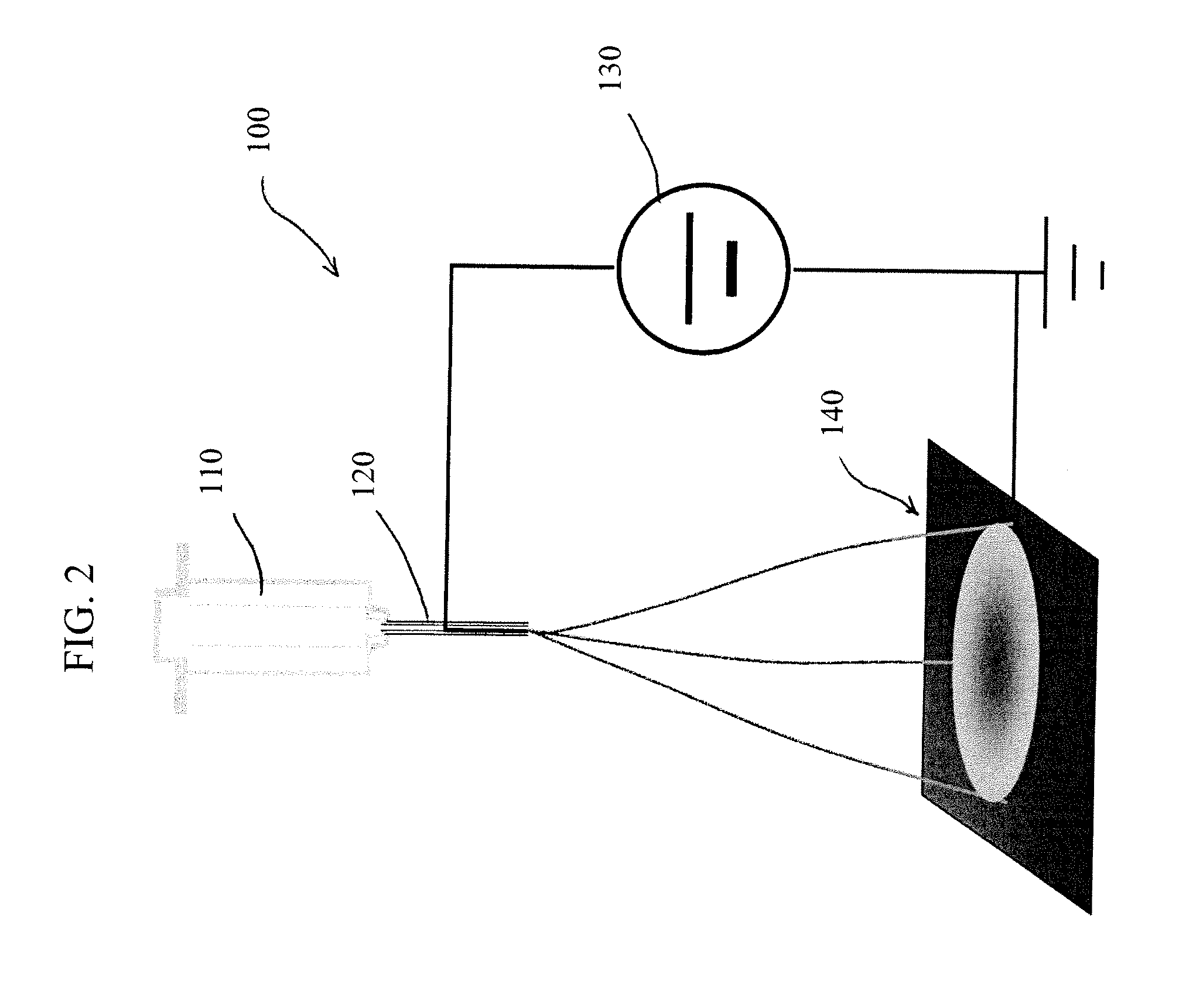Nanofibrous electrocatalysts
a nano-fibrous, electrocatalyst technology, applied in the field of nano-fibrous electrocatalysts, can solve the problems of increasing the cost of pemfc system, limiting the interaction between oxygen and electrolyte, and porous amorphous carbons, etc., to achieve the effect of promoting mass transport, improving thermal and electronic transfer, and reducing the resistance of percolation
- Summary
- Abstract
- Description
- Claims
- Application Information
AI Technical Summary
Benefits of technology
Problems solved by technology
Method used
Image
Examples
example 1
[0034]A precursor solution was prepared according to the following steps: A polymer mixture of PMMA and PAN in the weight ratio of 1.5:1 was first dissolved in the excess of DMF (×8 by weight) as the solvent to form solution 1. Separately, polymer PANI was dissolved in solvent DMF in the weight ratio of 1:20 to form solution 2; and 1,10-phenanthroline iron(II) perchlorate was dissolved into DMF in the weight ratio of 1:20 to form solution 3. The solutions 1, 2 and 3 were then mixed together in the volume ratio of 5:3:1 to form the final precursor solution. The precursor solution thus formed was electrospun to the polymeric nanofibers under an applied voltage of 1 kV / cm. A representative image of the polymeric nanofiber is shown in FIG. 3. The nanofibers thus prepared were subsequently transferred to a calcination dish and subjected to the heat-treatment. The heat treatment consisted of the following steps; the sample was heated in flowing air at 200° C. for 8 hours before the second...
example 2
[0035]The nanofibrous catalyst prepared according to Example 1 was made into the cathode of a fuel cell membrane electrode assembly (MEA). A catalyst ink was first prepared by mixing the catalyst powder from Example 1 with a Nafion ionomer solution so that the weight ratio of the catalyst to Nafion was 1:1. The ink was subsequently sprayed over a carbon paper (5 cm2, Avcarb), which was then heated under vacuum at 80° C. for 1 hour. The catalyst loading after drying was 1.8 mg cm−2. For the anode, an ink solution containing Pt / C (20 mg, 20 wt % of Pt, BASF), Nafione (5 wt % solution, Aldrich,), ethanol and water was sonicated for 1 hour and stirred for 0.5 hour, and then sprayed onto a carbon paper (5 cm2, Avcarb), which was then heated under vacuum at 80° C. for 1 hour. The Pt loading was 0.5 mg cm−2. The prepared cathode and anode were then pre-pressed against either side of a Nafion® 211 membrane (DuPont) at 120° C. for 1 minute using a load of 500 lb. The pre-pressed assembly was...
example 3
[0036]The MEA prepared according to Example 2 was installed in a fuel cell test station (Scribner 850e), and the cell performance was evaluated. The fuel cell test was carried out using a single cell with serpentine flow channels, and a geometric electrode surface area of 5 cm2. UHP grade gases were used. During the test, the cell temperature was kept at 80° C. Gases were humidified at 80° C. and were kept at a constant flow rate of 0.3 L min−1 for H2 and 0.4 L min−1 for O2, respectively. The total pressure was set at 22 psig for both anode and cathode. Shown in FIG. 4 is the polarization curve of cell voltage (E_stack) as a function of cell current density (I) and was obtained by scanning the cell current from 0 to maximum at a scan rate of 1 mA s−1. In the same chart, the power density, which is the product of the cell voltage and current density, was also plotted.
PUM
| Property | Measurement | Unit |
|---|---|---|
| temperature | aaaaa | aaaaa |
| electric field | aaaaa | aaaaa |
| temperature | aaaaa | aaaaa |
Abstract
Description
Claims
Application Information
 Login to View More
Login to View More - R&D
- Intellectual Property
- Life Sciences
- Materials
- Tech Scout
- Unparalleled Data Quality
- Higher Quality Content
- 60% Fewer Hallucinations
Browse by: Latest US Patents, China's latest patents, Technical Efficacy Thesaurus, Application Domain, Technology Topic, Popular Technical Reports.
© 2025 PatSnap. All rights reserved.Legal|Privacy policy|Modern Slavery Act Transparency Statement|Sitemap|About US| Contact US: help@patsnap.com



